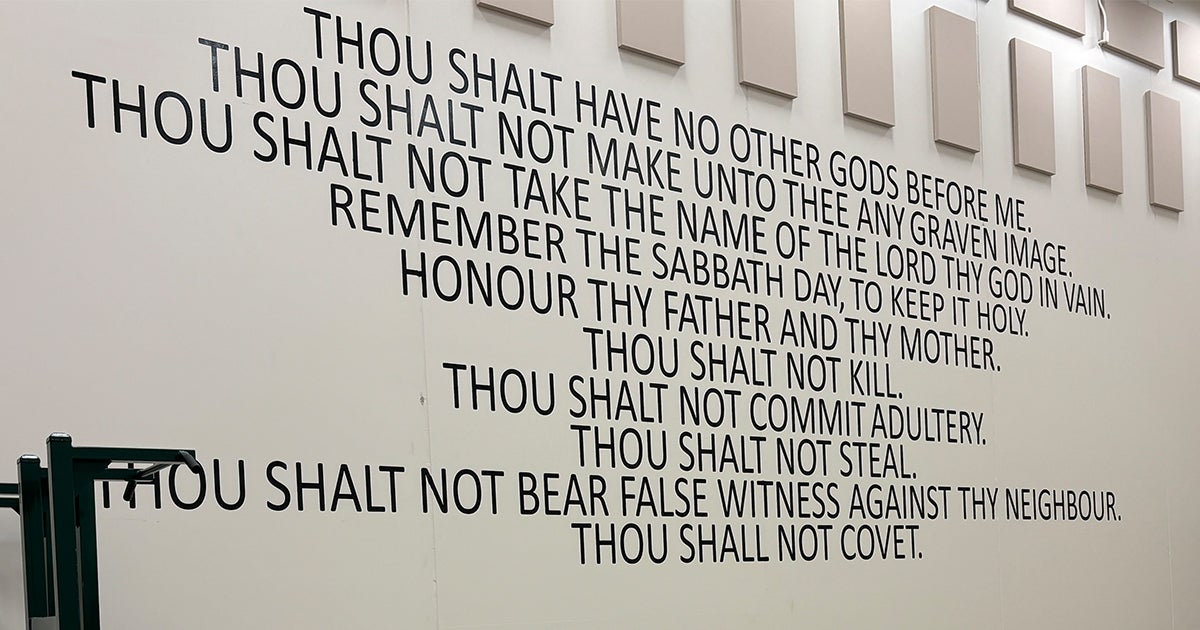
by Jorge Gomez • 4 min read
The Freedom From Religion Foundation (FFRF)—infamous for attacking virtually any public expression of religion—is at it once again. They’re now complaining about a Ten Commandments display at the Itasca County Jail in Grand Rapids, Minnesota.
In addition to the Ten Commandments, several other quotes are spread out “throughout the jail from former presidents, founding fathers and military leaders,” the Minnesota Post reports. A number of those include religious references.
FFRF is saying that county officials should “repaint and repent.” They sent a letter to the jail administrator earlier this month telling him to paint over the walls where the Ten Commandments and other quotes are written. They added that officials should “apologize to constituents for wasting money on two paint jobs.”
County officials said that part of the reason they included these religious quotes was to encourage and support inmate programs, which include spiritual services and mental health counseling.
You would think that giving people in jail an opportunity to read the Ten Commandments is a good thing. Maybe it would help those who’ve made a mistake and landed in legal trouble reconsider their actions, or possibly reorient their lives.
That’s not how the FFRF sees it. According to them, the Ten Commandments display is unconstitutional as an Establishment Clause violation.
Our attorneys sent a letter this week informing the county of what the law and the Constitution actually say about religious displays on public property. As our attorneys explained, there is a presumption of constitutionality for longstanding monuments, symbols and practices. The law looks to whether a government action is in accord with the nation’s history and tradition to determine whether it is lawful under the Establishment Clause.
Radical groups often like to argue the same points about “coercion” or “separation of Church and State” when they attack a public religious display. They often base those claims on outdated legal precedent.
But as the U.S. Supreme Court made clear in our victories in American Legion v. American Humanist Association (2019) and Kennedy v. Bremerton School District (2022), the standard for determining whether something like a Ten Commandments display on public land is constitutional is whether it is in line with historical practices and understanding.
“The Supreme Court made it clear that courts must now look to the original meaning of the U.S. Constitution, history and tradition to determine whether a government action is lawful under the Establishment Clause,” First Liberty Senior Counsel Roger Byron said.
“Even before Kennedy, the Supreme Court found that there are numerous depictions of the Ten Commandments in prominent government buildings in Washington, D.C., due to their historical significance as one of the foundations of our legal system,” he added. “It also found that acknowledgments of the role played by the Ten Commandments in our nation’s heritage are common throughout America. Accordingly, government displays of the Ten Commandments generally are well within the law.”
Itasca County officials shouldn’t cave to misguided demands. They should not be intimidated into erasing such a display just because of the religious content. As the Supreme Court has long observed, we are, after all, “a religious people whose institutions presuppose a Supreme Being.”
Read More:
Minnesota Post: Itasca County faces blowback over Ten Commandments display in new jail
WDIO ABC: Inside the new Itasca County Government Center ahead of the opening of the building